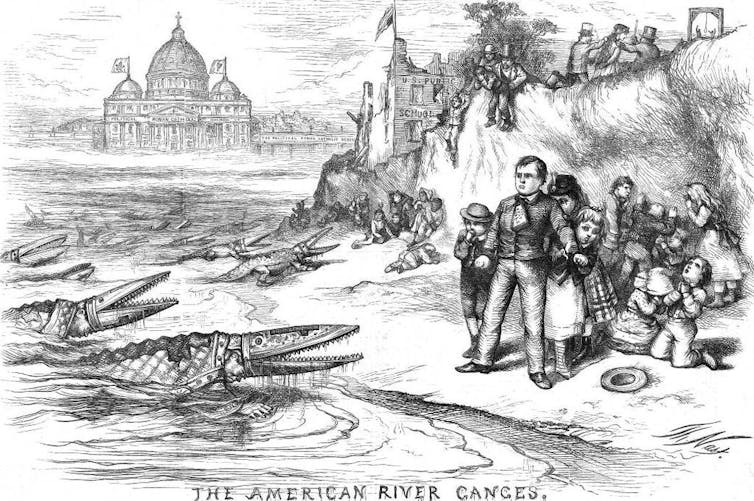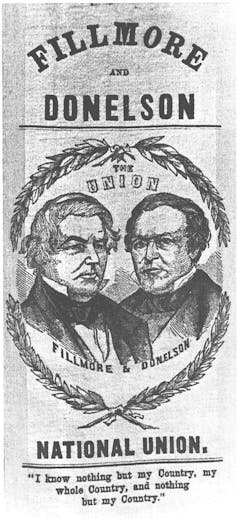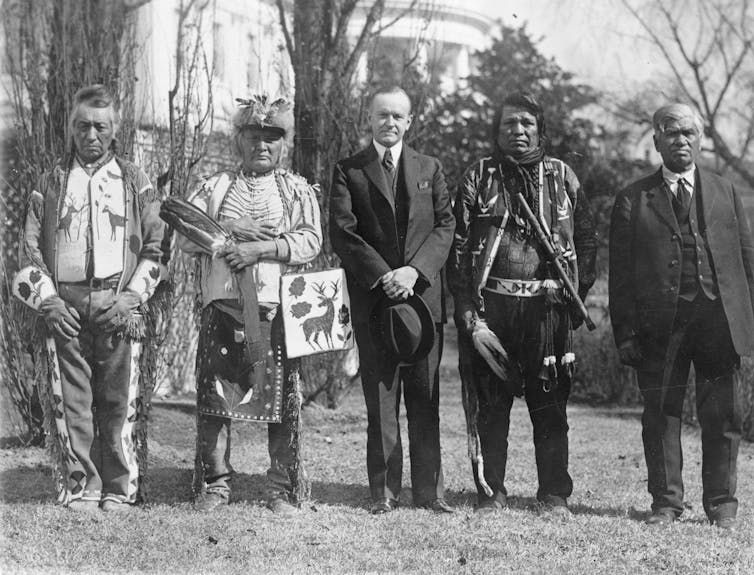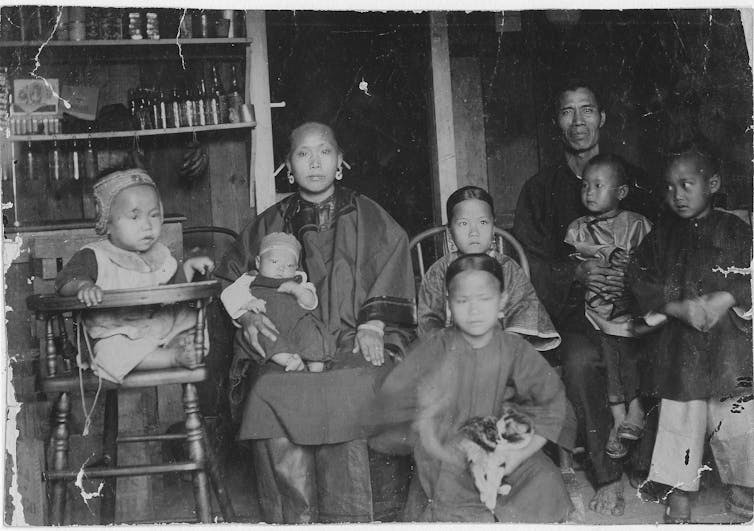
One hundred years ago, the U.S. Congress enacted the most notorious immigration legislation in American history. Signed by President Calvin Coolidge, the Immigration Act of 1924 dramatically reduced immigration from eastern and southern Europe and practically barred it from Asia.
How the law did this, however, was somewhat subtle: a quota. Lawmakers calculated how many immigrants from each European country were residing in the United States in 1890 and then took 2% of that number. Only that many newcomers could be admitted from any particular country each year. Before the end of the 19th century, the number of immigrants from outside western and northern Europe was still relatively small – meaning their 2% quotas would be minuscule.
In short, the Immigration Act was unabashedly racist, seeking to roll back the demographic tide. One of its sponsors, U.S. Rep. Albert Johnson, warned the House Committee on Immigration that “a stream of alien blood” was poisoning the nation.
Torn between “the American dream” and fears of an ungovernable “melting pot,” Americans have always viewed immigrants ambivalently. In 1924, as is true today, many citizens thought in terms of “good” immigration versus “bad” immigration. In their minds, 1890 marked a dividing line between the two.
Looking back as a historian of immigration and religion, I’m struck by three changes in U.S. views of immigration over the course of the 19th century.
Religion, more than race
By the 20th century, eugenicists were obsessing over race. In contrast, early 19th century nativists worried more about religion and how to protect America’s culturally Protestant foundations from Catholic immigrants – most of whom, at this point, came from Ireland and Germany. At the heart of this anxiety lay an old paranoia: Could foreigners confessing loyalty to an infallible pope become faithful citizens of a republic?

Perhaps so, ventured Cincinnati preacher Rev. Lyman Beecher – but only with great effort on their behalf.
“What is to be done,” he asked, in his influential 1835 tract “A Plea For the West,” “to educate the millions which in twenty years Europe will pour out upon us?”
Many nativists of this time shared similar fears of immigration, declaring that the Catholic Church was orchestrating “a foreign conspiracy” against the liberties of the U.S., aimed at stripping away constitutional freedoms and rigging elections on behalf of Vatican interests.
For Beecher, creating “intelligent, virtuous, and industrious emigrants” demanded public education combined with Protestant influence. By such means, he supposed, patriotic Americans might be fashioned from Catholic populations, who might just embrace Protestant churches along the way. Such thinking was commonplace.
Local, not federal
A second contrast between the earlier nativism and its later 19th century counterpart was the virtual absence of major national immigration legislation. For all their fears of foreign Catholic influence, nativists in the early American republic emphasized assimilation over exclusion. They saw immigration as a cultural, religious and educational concern more than an arena for federal policy.

The anti-immigrant American Party, or Know-Nothing ticket, did flourish in the 1850s before imploding over the issue of slavery. Know-Nothings enjoyed big gains in state and municipal elections, winning mayoral elections in cities including Boston and Philadelphia.
In Beecher’s hometown of Cincinnati, however, the nativist ticket failed to dislodge the incumbent Democratic mayor. There and elsewhere, Know-Nothing dependence on Protestant German support against the immigrant Catholic vote revealed the frailty of coalition politics and the subjective nature of distinctions between “good” and “bad” immigrants. Likewise, the one major immigration proposal of the American Party – a required 21-year waiting period for new immigrants seeking citizenship – never got past the drawing board.
Although overseas immigration declined in the mid-1850s, Know-Nothing activism did not necessarily explain this downturn. Instead, declining immigration reflected economic cycles, such as the end of Ireland’s peak famine years.
End of an era
The final variable shaping popular attitudes toward immigration was westward expansion. Most Americans regarded the frontier as a pressure valve for their growing country, promising land and opportunity to enterprising settlers. But by the late 19th century, the era of Manifest Destiny – the belief that the country’s destiny was to spread from sea to sea – was nearing the end of its road.

Revealingly, the 68th U.S. Congress, which passed the Immigration Act of 1924, also passed the Indian Citizenship Act the following month. The law confirmed that all Native Americans were U.S. citizens at birth, while reinforcing their dependency on reservation lands as wards of the federal government.
The closure of the frontier marked a watershed in immigration history but also a sea change in America’s Indigenous relations. The government integrated Native citizens into the fabric of society, yet withheld the full benefits of citizenship, including guaranteed voting rights.
New era, new prejudice
By the late 1800s, the children of 19th century immigrants – mostly northern Europeans – had largely assimilated into American society, despite the anti-German prejudice that was common during World War I.
Meanwhile, newer immigrants from elsewhere in Europe and beyond were growing in number and experienced discrimination. Immigrants from East Asia, in particular, faced suspicion. The Chinese Exclusion Act of 1882 set a moratorium on all immigration from China, alleging that Chinese immigrants endangered “the good order of certain localities.”

Generally speaking, racial rather than religious prejudice dominated anti-immigrant politics by the late 19th century – although these boundaries blurred in the case of antisemitism against Jewish immigrants from eastern and central Europe. The popularity of “racial Darwinism” was at its height: pseudoscientific thinking that misconstrued Charles Darwin’s ideas about evolution, applying ideas such as “survival of fittest” to human society. Many Americans with ancestry from northern Europe embraced the resulting dogma of “Nordic” superiority.
The racism behind the 1924 Immigration Act even prompted a reference in F. Scott Fitzgerald’s “The Great Gatsby,” the celebrated novel published the following year.
“Have you read ‘The Rise of the Colored Empires’ by this man Goddard?” asks Gatsby’s antagonist, Tom Buchanan. This thinly veiled reference alludes to “The Passing of the White Race,” a 1916 manifesto by avowed white supremacist Madison Grant – which was approvingly cited in the congressional debates of 1924.
The record since
The quota system was not repealed until 1965, when President Lyndon Johnson signed the Immigration and Nationality Act, praising “those who can contribute most to this country – to its growth, to its strength, to its spirit.”
Ever since, U.S. immigration has avoided overt discrimination by national origins, with one exception: Donald Trump’s 2017 executive order temporarily barring entry visas from Iran, Iraq, Libya, Somalia, Sudan, Syria and Yemen.
Nevertheless, the Immigration Act of 1924 remains a historical benchmark, reflecting age-old tensions between civic inclusion and racial exclusivity in American life.
Matthew Smith does not work for, consult, own shares in or receive funding from any company or organization that would benefit from this article, and has disclosed no relevant affiliations beyond their academic appointment.
This article was originally published on The Conversation. Read the original article.







